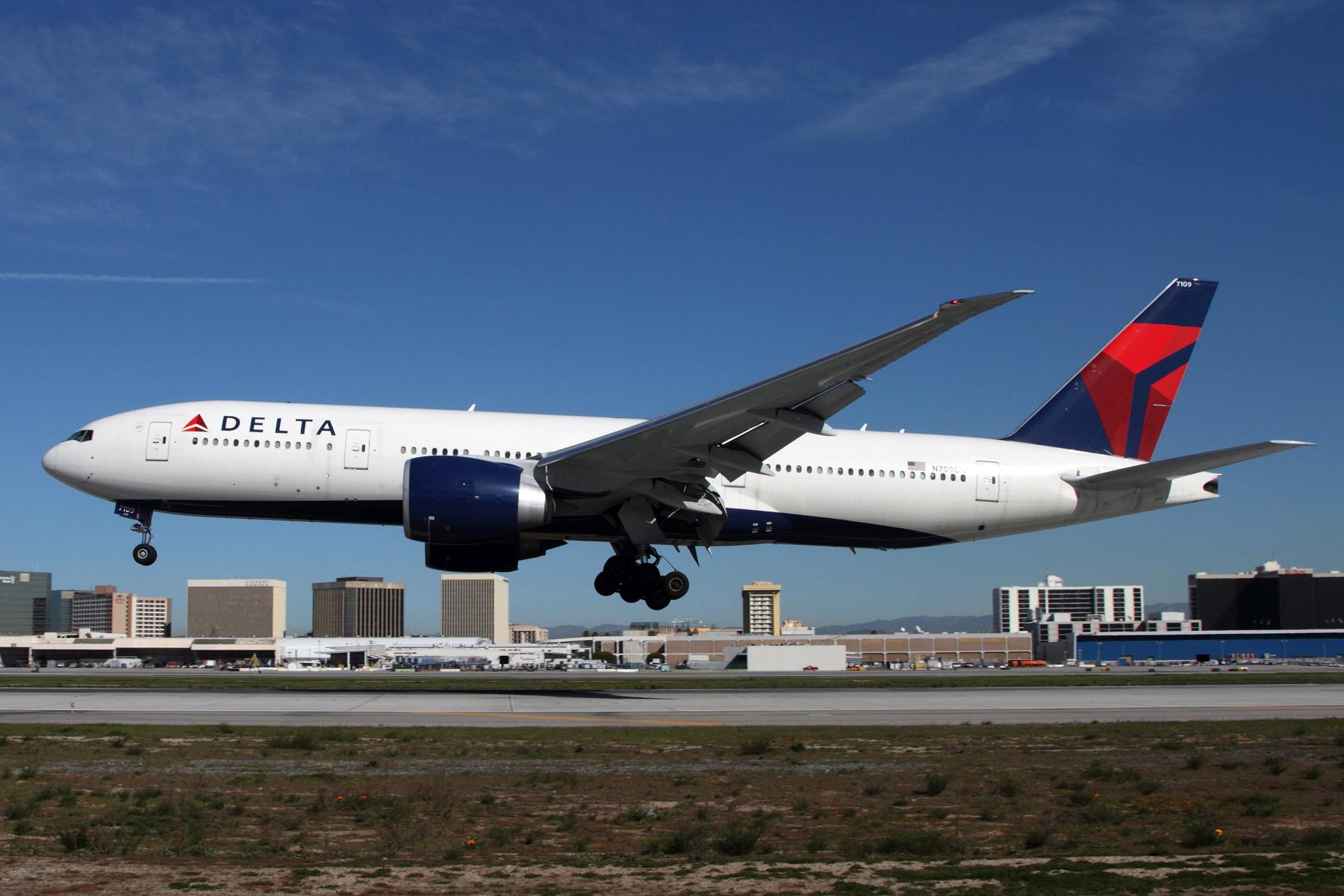
Delta Air Lines will remove its Boeing 777s by year-end, further streamlining its fleet and bracing for a long recovery for long-haul passenger demand amid the COVID-19 pandemic.
“With international travel expected to return slowly, we’ve ... made the difficult decision to permanently retire our Boeing 777 fleet—18 aircraft—by the end of the year,” CEO Ed Bastian wrote in a May 14 employee memo. Our A330s and A350-900s, which are more fuel-efficient and cost-effective, will perform long-haul flying as international demand returns.”
The 777s will follow Delta’s MD-88s and MD-90s into retirement this year. The 47 MD-88s operating before the pandemic struck were slated to retire by year-end, while the 29 MD-90s, set to be phased out in the next few years, were a new addition to the 2020 retirement list. Both narrrowbody fleets will be retired by July 1, Delta said last month.
Delta will take non-cash, pre-tax impairment charges of $1.4-1.7 billion in the second quarter linked to the 777 and MD-90 fleet retirements, it said in a regulatory filing.
Delta has 11 of its 777s in service—six 777-200ERs and five 777-200LRs, Aviation Week Intelligence Network Fleet Data show. The other seven—five -200LRs and two -200ERs—have been idled as a result of pandemic-related fleet changes. Its remaining current and projected future long-haul fleet is dominated by Airbus aircraft, including 13 A350-900s and 22 more on order, five A330-900s and 32 on order, 11 A330-200s, and 21 A330-300s. Delta also still has six 767-300ERs and nine 767-400s in service, with an average age of 21 years. Another 57 767s are among the 650 aircraft Delta has idled, but not officially retired, while it evaluates future fleet needs.
Parking aircraft, cutting routes, and reducing staff expenses through voluntary leaves of absence has helped Delta cut its daily cash burn from $100 million when the pandemic started two months ago to $50 million now, the airline said. More than 41,000 employees have taken voluntary leaves of absence, the airline added.
Delta is also evaluating its pilot staffing as part of a revised long-term strategy. A May 14 memo from the airline to pilots said that Delta is on pace to have 7,000 more pilots than it needs this fall, and—more critically—2,500-3,500 more than it needs in July 2021, when post-pandemic demand should be more clear. Delta is projecting it will need 9,400 pilots in the 2021 third quarter, the memo said.
Delta has about 14,700 pilots currently, and 3,400 are projected to reach mandatory retirement by 2024, including 900 in the next year, calculations by Delta’s Master Executive Council (MEC) show. The MEC, which said Delta started 2020 understaffed by more than 600 pilots, believes voluntary staff reductions will serve the airline better long-term than furloughs.
“As we have told management repeatedly, we are open to talks on early-out programs for longer-term solutions and [Special Incentive Lines, or SIL] for short- and medium-term solutions,” MEC Chairman Ryan Schnitzler wrote to the Air Line Pilots Association-represented pilots in a May 4 letter. “We believe that early-outs and SILs provide flexibility while offsetting the costs of a short-term overstaffing situation ... Our problem is not a cost issue. It is a lack of revenue, and cost reductions will not solve that problem.”
Opting for voluntary reductions such as early retirements and SILs, which remove pilots from flying duty but keep them on at reduced pay, would allow the airline to keep pilots ready and minimize training and hiring costs as demand returns, the union argues. Furloughs would cut expenses more quickly, and at the cost of longer-term flexibility and labor strife.
“The MEC maintains that while furloughs are possible, the cost-savings of doing so must be calculated against the costs associated with furlough pay, displacement training costs, and training costs when flying returns,” Schnitzler wrote. “This is not a capricious decision and must also factor in the long-term impact to the furloughed pilots and their families. Furloughs are a decision of last resort, and overall costs are not measured in dollars alone.”






Comments